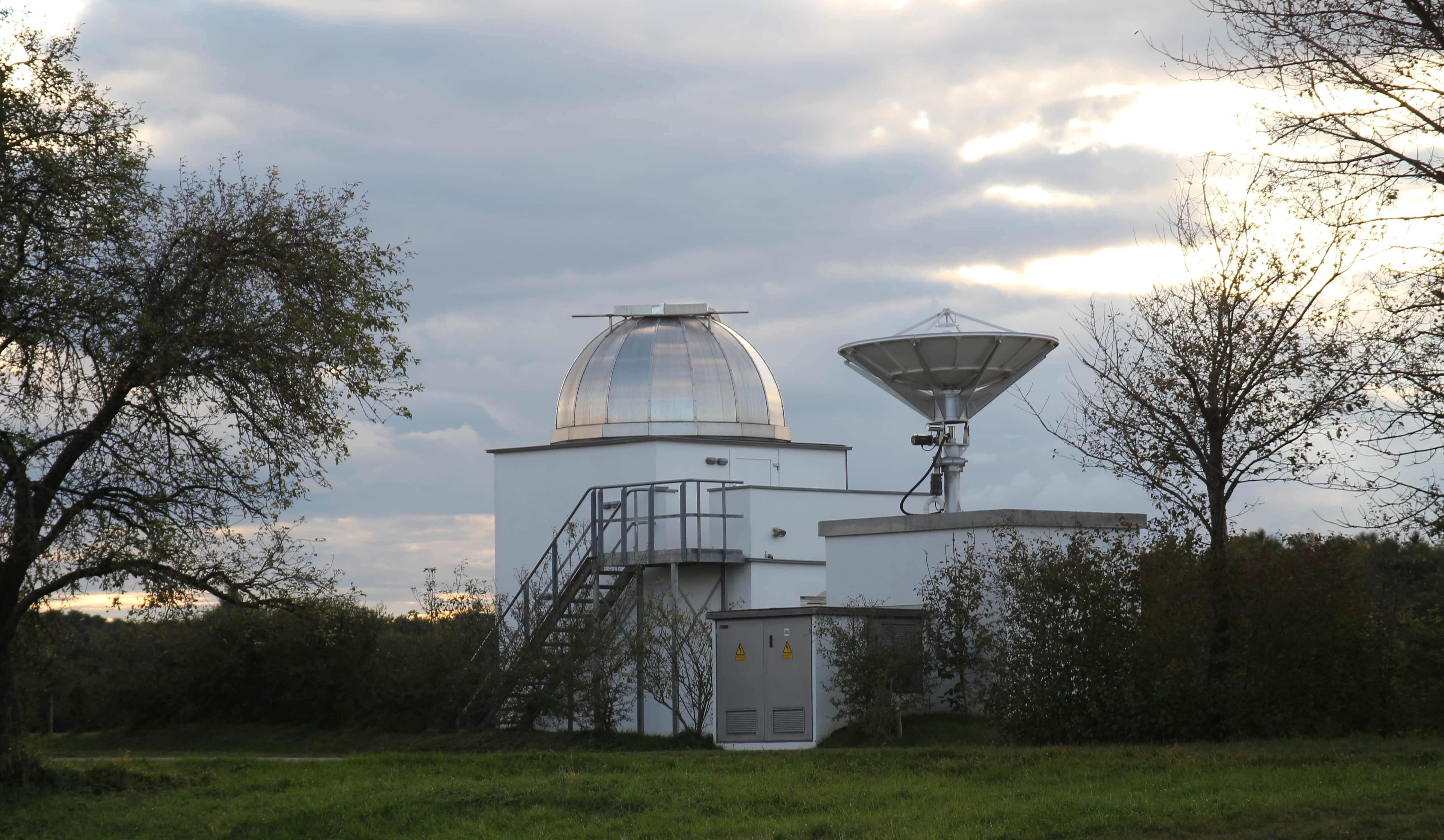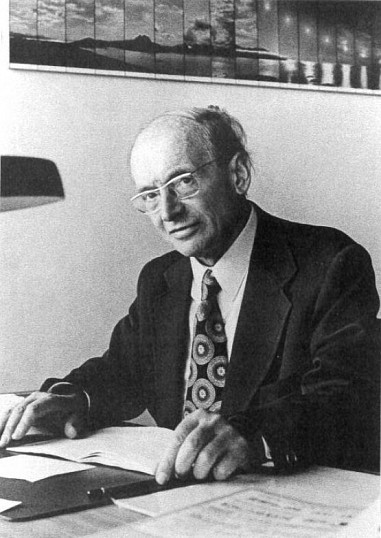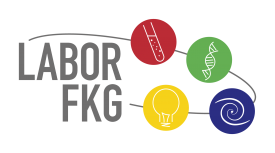Hans Haffner was born in Nördlingen on November 8th of 1912 as the third of five children of the pastor Christian Haffner and his wife Gertrud. After his high school years in Lindau and Regensburg, he studied at the University of Munich from 1931 on, before moving to the University of Göttingen in 1933.
In 1934 Haffner started working on his dissertation at the University of Göttingen, which was about the photographic photometry of the open star cluster Praesepe. From this "sky crib" M41 he evaluated photographic plates from the blue region of the light spectrum. Through this work he met Otto Heckmann, who examined the red spectral range of the same object. Both scientists achieved a remarkable accuracy in their work, which was only achieved again decades later by photoelectric methods.
With the beginning of the 2nd world war Haffner was drafted. The director of the Munich observatory Karl-Otto Kiepenheuer could reach, however, that Haffner was assigned to the newly founded Wendelstein observatory for solar monitoring, where Haffner led the construction of this institution in the next five years.
After the war he returned to the Astronomical Institute of the University of Göttingen and resumed the photometric investigation of various star clusters. In 1953 he was appointed Professor of Astronomy at the University of Hamburg. There he again worked together with Otto Heckmann, who had become director of the University Observatory Hamburg-Bergedorf during the war.
From 1955 to 1959 Hans Haffner was Superintendent at the Boyden Observatory in Bloemfontein, South Africa, with a few months' interruption in 1956/57. There he made photometric images of star clusters and produced atlases of the southern sky with blue and infrared images as well as of the southern Milky Way. After his return to the Hamburg-Bergedorf Observatory, he became chairman of the Astronomische Gesellschaft in 1960.
When Otto Heckmann became director of the newly founded European Southern Observatory ESO in 1962, Haffner provisionally took over the management of the University Observatory Hamburg-Bergedorf for him until 1967.
In these years he was scientifically engaged mainly with the lunar surface and published together with Albert Eisenhut a picture atlas of the sky. In 1967 Hans Haffner was appointed to the newly established Chair of Astronomy at the University of Würzburg. Full of zest for action he built up the chair and modernized the university observatory at Keesburg.
At the turn of the year 1971/72, he was in La Silla in Chile together with Otto Heckmann to put a new telescope at ESO into operation. Afterwards he travelled again to Bloemfontein for a research stay.
He lost his vision in 1973 due to a brain tumor, which he was able to regain after surgical removal of the tumor. However, the operation did not result in a lasting recovery. After he went blind again at the end of 1976, Hans Haffner succumbed to cancer on February 23th of 1977.



